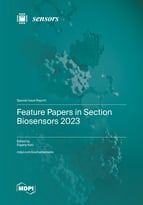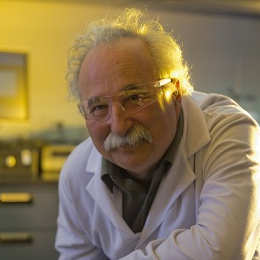Feature Papers in Section Biosensors 2023
A special issue of Sensors (ISSN 1424-8220). This special issue belongs to the section "Biosensors".
Deadline for manuscript submissions: closed (31 December 2023) | Viewed by 19497
Special Issue Editor
Interests: bioelectronics; bionanotechnology; bioelectrochemistry; biosensors; self-assembling enzymes; monolayers; modified electrodes
Special Issues, Collections and Topics in MDPI journals
Special Issue Information
Dear Colleagues,
We are pleased to announce that the journal Section Biosensors is now compiling a collection of papers submitted by the Editorial Board Members (EBMs) of our journal and outstanding scholars in this research field. We welcome contributions, as well as recommendations, from the EBMs.
The purpose of this Special Issue is to publish a set of papers that typify the most exceptional, insightful, influential, and original research articles or reviews, where our section’s EBMs discuss key topics in the field. We expect these papers to be widely read and highly influential within the field. All papers in this Special Issue will be collated into a printed edition book after the deadline and will be well promoted.
We would also like to take this opportunity to call on more scholars to join the journal Section Biosensors so that we can work together to further develop this exciting field of research. Potential topics include but are not limited to the following:
- Biosensors
- Lab-on-a-chip technology
- Optical biosensors
- Plasmonic biosensors
- Biosensors for cell analysis
- Electrochemical biosensor
- Enzymatic biosensors
- Graphene-based biosensors
- Carbon nanotube biosensors
- Aptamer biosensors
- DNA/RNA sensors
- Glucose biosensor
- Capacitive biosensors
- Biosensor for toxin detection
- Implantable biosensors
- Microwave biosensors
- Biosensor and bioelectronic devices
- Nucleic acid sensors
- Protein-based biosensors
- Immunosensors
- Biological electrode
- Magnetic-based sensors
- Biosensors of bacterial cells
Prof. Dr. Evgeny Katz
Guest Editor
Manuscript Submission Information
Manuscripts should be submitted online at www.mdpi.com by registering and logging in to this website. Once you are registered, click here to go to the submission form. Manuscripts can be submitted until the deadline. All submissions that pass pre-check are peer-reviewed. Accepted papers will be published continuously in the journal (as soon as accepted) and will be listed together on the special issue website. Research articles, review articles as well as short communications are invited. For planned papers, a title and short abstract (about 100 words) can be sent to the Editorial Office for announcement on this website.
Submitted manuscripts should not have been published previously, nor be under consideration for publication elsewhere (except conference proceedings papers). All manuscripts are thoroughly refereed through a single-blind peer-review process. A guide for authors and other relevant information for submission of manuscripts is available on the Instructions for Authors page. Sensors is an international peer-reviewed open access semimonthly journal published by MDPI.
Please visit the Instructions for Authors page before submitting a manuscript. The Article Processing Charge (APC) for publication in this open access journal is 2600 CHF (Swiss Francs). Submitted papers should be well formatted and use good English. Authors may use MDPI's English editing service prior to publication or during author revisions.
Related Special Issue
- Feature Papers in Biosensors Section 2022 in Sensors (17 articles)







